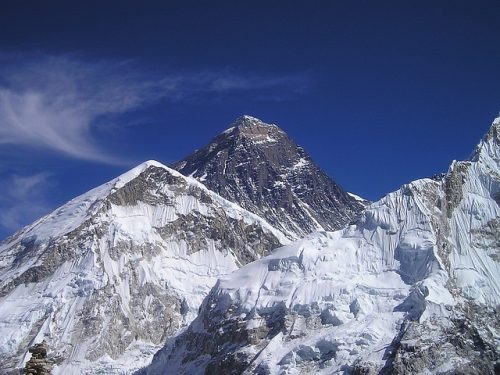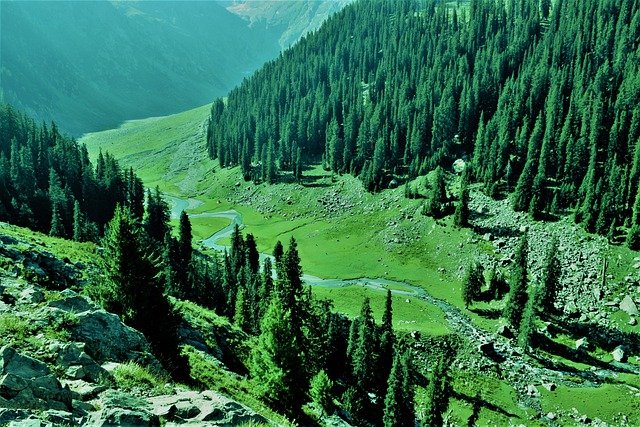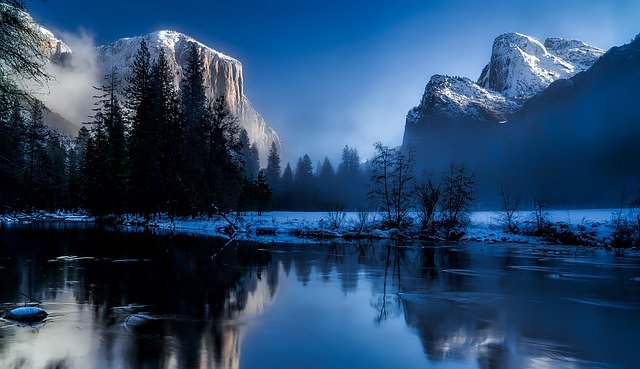INTRODUCTION
Climate change is driven by anthropogenic activities, now there is no doubt about it. There is also no doubt about the fact that countries like Pakistan are the most hardest hit by its impacts. All provinces of Pakistan are effected by climate change in one way or the other, depending upon their topography. If you wish to know more about Climate Change, please check out: Climate change and its Causes and Effects and for more information about impacts of Climate change on Pakistan, check out: Climate Change and Its Impact on Pakistan.
For more info: Climate Change and Its Impact on Pakistan
Location of province
The Khyber Pakhtunkhwa province was formerly known as North West frontier Province (NWFP). It is situated near the west and north side of Afghanistan, Azad Kashmir in the east and Gilgit Baltistan in the northeast, the Punjab province in the southeast and Balochistan is located in the southwest. FATA is along the western side of the province which was formerly a part of the Afghan tribal communities until 2018. Peshawar is considered to be the provincial capital. The total area of the province is 101,741 square km and the total population is 35,519,927 as of 2017.
Topography of province
This province has mainly terrains of mountains ranges, submontane areas and foot-plains along with hills. The mountainous region starts from the north up to the north- south, to the south of the River Kabul and divides the province into two parts east and west.
The HinduKush region is very famous for its beauty and the highest peak is Tirch mir of about 25,230 feet. The eastern part is occupied by the Lesser Himalayas and Sub Himalayas. This province is seismically active with moderate to high tremors. There are climatic variations due to elevations. The valley faces cold winters and moderate cool summers. The rainfall is 400 mm annually during January to April. In the mountainous slopes there are evergreen oaks, conifers and pine trees. Some parts of the province are home to grasslands that extend in the south and are occupied by grasses, acacia and bushes. Most of these forests and trees are cut down due to deforestation.
Have a look at: How Much Time Earth Has Before Climate Change Destroys it?
EFFECTS OF CLIMATE CHANGE ON KHYBER PAKHTUNKHWA
1. Glacier melting and glacial retreat
Pakistan is facing glacial melting at 2.3 % per year and this is to increase at the end of 2050. Currently there are 7000 glaciers in Pakistan stretching from Himalaya to Hindu Kush in which 3000 glaciers are already unstable. These glaciers provide water to the nearby communities and thousands of people are dependent on them. Though they are melting at a rapid rate and about 30 are at a high risk to burst and cause ice avalanche and flash floods. The IPCC reports that if we limit the temperature rise to 1.5 ˚C still about 30% of glaciers will melt till 2050. For more information read: Climate Change and Himalayan Glacier Hazard

2. Floods
About one third of the province is at the risk of floods. Due to the unexpected flash floods and inadequate mitigation strategies in Swat, Upper and Lower Dir, Mansehra, Shangla, Malakand are all at risk of flash floods. The flood in Swat in august 2021 affected 240,000 household last year. To know more about flash floods, read Flash Floods – Causes, Effects, Prevention and Management. GLOF is another disaster that is mainly due to climate change, to know more about them check out: Glacial Lake Outburst Floods in Pakistan- Causes and Effects.
3. Extreme Weather Events Like Snow Storm And Heatwaves
Extreme snow blizzards and snow storms are expected to the increase throughout the northern part of the province. One such event has been reported in January 2022 where more than 20 deaths has reported due to snow storm near galiyaat region. Due to the increasing temperatures more frequent and harsh heat waves have been reported. These trends will continue to get worse. For more information, read: Heatwaves in Pakistan And India – Causes, Effects, Solutions
Also check out: Natural Disasters Common In Pakistan and their Impact
4. Mass Migration of Humans Towards Cities
Most of the people in the province live in the rural areas and are farmers or fisher men. People will move towards the cities as there will be less opportunities in rural areas due to impacts of climate change and this will cause stress on cities, slums and spread of disease due to high population. There is already high population influx towards the cities due to job opportunities.
5. Soil Erosion
The soil erosion in the province is causing loss of rich fertile agricultural land and causes increased pollution as sediments flow in the water bodies. These damage the aquatic life. These lands have top soils that cannot withstand water and can cause flooding. To know more about soil erosion, please read: Soil Erosion and Degradation – Causes, Effects, and Solutions
6. Seasonal Change and Decreased Crop Yield
The wheat crops in Punjab and Khyber Pakhtunkwa are facing damaging effects due to rise in high temperatures and pre maturing of the seeds. The already affected monsoon season is diminishing the crop yield and production. The germination of seeds will be affected that occurs at 10 to 25 ˚C With the increase in temperature. KPK is a major producer of fruits in Pakistan and any decline in crop yield would result in food insecurity in Pakistan.
7. Landslides Due to Melting Permafrost
Landslides with ice avalanches that bring thick ice boulders with them have been reported which block the roads and tore down the bridges and electricity connections. There are have been road accidents and other fatalities due to them. The frequency of these will likely increase due to Climate Change as temperatures rise. For more information: Landslides and Rockfall – Causes, Effects, and Prevention
8. Species Extinction
The biodiversity of KPK province is really rich, both in terms of animals and plants. There exists a wide range of species such as red squirrel, rhesis monkey, leopard, wild bears, markhoor and variety of birds. Most of them have been included in the IUCN red list due to hunting, climate change or habitat loss. These species face another threat in the form of increase in wildfires in the rigion. Also read: Wildlife Is Already Coping With Effects of Climate Change
CONCLUSION
Although there has been much damage already done to the province due to climate change and its effects but its effect can still be rectified by doing more outcome based research in this field such as glacial lake outburst flow or the massive species extinction or creating more opportunities towards the youth to stop migration to cities. A climate change adaptation plan on provincial as well as federal level is required to mitigate the impacts of climate change and to protect the region from further disasters.
For more info please read: What is Climate Change Adaptation? – Importance and Methods
For detailed information about impacts of climate change on each province of Pakistan, check out the detailed articles given below:
Effect of Climate Change on Punjab Province of Pakistan
Effects of Climate Change on Sindh Province of Pakistan
Effects of Climate Change on Balochistan Province of Pakistan
Effects of Climate Change on AJK of Pakistan
Effect of Climate Change On Gilgit Baltistan of Pakistan
We hope you liked this post! Please comment below if you have any suggestions, comments or feedback! We at #envpk love hearing from readers! Thanks




